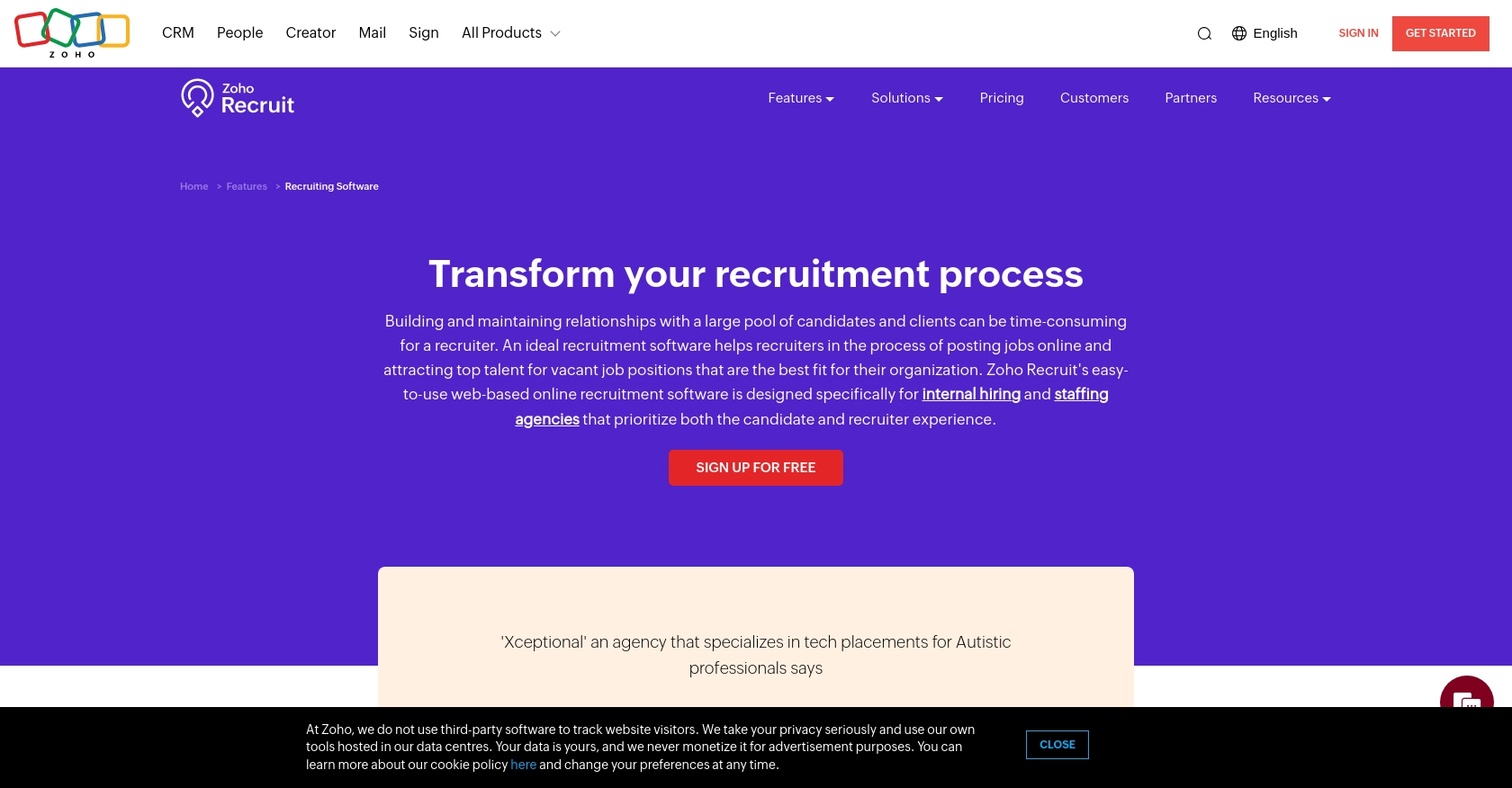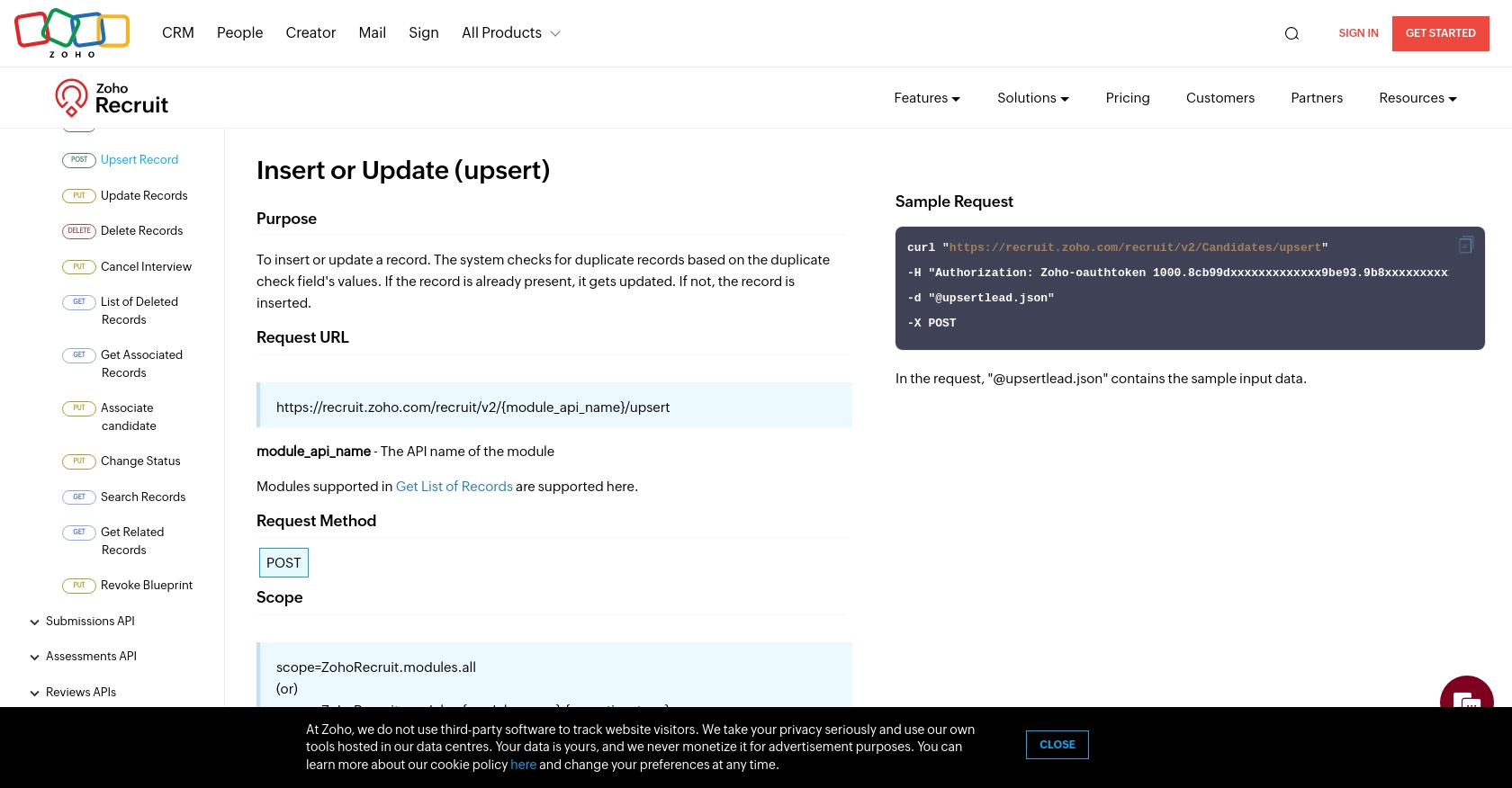Using the Zoho Recruit API to Create or Update Candidates in Python

Introduction to Zoho Recruit API
Zoho Recruit is a comprehensive recruitment software solution designed to streamline the hiring process for businesses of all sizes. It offers a robust platform with features for candidate sourcing, resume management, and interview scheduling, making it a popular choice for staffing agencies and corporate HR departments.
Integrating with the Zoho Recruit API allows developers to automate and enhance recruitment workflows, such as creating or updating candidate records programmatically. For example, you can automatically sync candidate information from external job portals into Zoho Recruit, ensuring your recruitment database is always up-to-date and reducing manual data entry.
Setting Up Your Zoho Recruit Test/Sandbox Account
Before you can start integrating with the Zoho Recruit API, you'll need to set up a test or sandbox account. This will allow you to safely experiment with API calls without affecting your live data.
Creating a Zoho Recruit Account
If you don't already have a Zoho Recruit account, you can sign up for a free trial on the Zoho Recruit website. Follow the instructions to create your account. Once your account is set up, you'll be able to access the Zoho Recruit dashboard.
Registering a Client Application for OAuth Authentication
Since the Zoho Recruit API uses OAuth 2.0 for authentication, you'll need to register your application to obtain the necessary credentials.
- Go to the Zoho Developer Console.
- Select the appropriate client type for your application (e.g., Web-Based, Mobile, or Self Client).
- Enter the required details:
- Client Name: The name of your application.
- Homepage URL: The URL of your web page.
- Authorized Redirect URIs: A valid URL where Zoho will redirect after successful authentication.
- Click Create to register your application.
Upon successful registration, you'll receive a Client ID and Client Secret. Keep these credentials secure as they are essential for authenticating API requests.
Generating OAuth Tokens
With your client application registered, you can now generate OAuth tokens to authenticate API requests.
- Make an authorization request to Zoho's OAuth server using your Client ID and Redirect URI.
- Once authorized, you'll receive an authorization code. Use this code to request an access token and refresh token from Zoho.
- Store the access token securely. It will be used in the header of your API requests to authenticate them.
For detailed steps on generating tokens, refer to the Zoho Recruit OAuth Overview.

sbb-itb-96038d7
Making API Calls to Zoho Recruit for Candidate Management Using Python
To interact with the Zoho Recruit API for creating or updating candidate records, you'll need to use Python. This section will guide you through setting up your environment, writing the necessary code, and handling responses effectively.
Setting Up Your Python Environment for Zoho Recruit API Integration
Before making API calls, ensure you have Python 3.11.1 installed on your machine. Additionally, you'll need the requests library to handle HTTP requests. Install it using pip:
pip install requests
Writing Python Code to Create or Update Candidates in Zoho Recruit
To create or update candidates, you'll use the Zoho Recruit API's upsert functionality. This allows you to insert a new candidate or update an existing one based on specified criteria.
import requests
# Define the API endpoint and headers
url = "https://recruit.zoho.com/recruit/v2/Candidates/upsert"
headers = {
"Authorization": "Zoho-oauthtoken Your_Access_Token",
"Content-Type": "application/json"
}
# Define the candidate data
candidate_data = {
"data": [
{
"First_Name": "John",
"Last_Name": "Doe",
"Email": "john.doe@example.com",
"Phone": "1234567890"
}
],
"duplicate_check_fields": ["Email"]
}
# Make the POST request to the API
response = requests.post(url, json=candidate_data, headers=headers)
# Check the response status
if response.status_code == 201:
print("Candidate created or updated successfully.")
else:
print(f"Failed to upsert candidate. Status Code: {response.status_code}")
print(f"Error: {response.json()}")
Replace Your_Access_Token with the access token obtained during the OAuth setup. This code snippet demonstrates how to define candidate data and make a POST request to the Zoho Recruit API.
Verifying Successful API Requests in Zoho Recruit
After running the script, verify the candidate's creation or update by checking the Zoho Recruit dashboard. The candidate should appear in the Candidates module with the specified details.
Handling Errors and Understanding Zoho Recruit API Response Codes
It's crucial to handle potential errors when making API calls. Zoho Recruit API may return various status codes, such as:
- 200 OK: The request was successful.
- 201 Created: The candidate was successfully created or updated.
- 400 Bad Request: The request was invalid. Check the input data.
- 401 Authorization Error: Invalid API key or token.
- 429 Too Many Requests: Rate limit exceeded. Try again later.
For more detailed error handling, refer to the Zoho Recruit Status Codes documentation.

Conclusion and Best Practices for Zoho Recruit API Integration
Integrating with the Zoho Recruit API using Python offers a powerful way to automate and enhance your recruitment processes. By leveraging the API's capabilities, developers can efficiently manage candidate data, streamline workflows, and ensure that recruitment databases remain up-to-date with minimal manual intervention.
Best Practices for Secure and Efficient Zoho Recruit API Usage
- Secure Storage of Credentials: Always store your OAuth tokens and client credentials securely. Avoid exposing them in public repositories or client-side code.
- Handling Rate Limits: Be mindful of Zoho Recruit's API rate limits. Implement error handling for status code
429 Too Many Requestsand consider implementing retry logic with exponential backoff. - Data Standardization: Ensure that data fields are standardized before making API calls to maintain consistency across your recruitment database.
- Efficient Error Handling: Implement comprehensive error handling to manage various API response codes effectively. This will help in diagnosing issues quickly and maintaining a robust integration.
Enhance Your Integration Strategy with Endgrate
While integrating with Zoho Recruit API can significantly improve your recruitment processes, managing multiple integrations can be complex and time-consuming. Endgrate offers a unified API solution that simplifies integration management across various platforms, including Zoho Recruit.
By using Endgrate, you can:
- Save time and resources by outsourcing integration management, allowing you to focus on your core product development.
- Build once for each use case and leverage a single API endpoint for multiple integrations, reducing redundancy and complexity.
- Provide an intuitive integration experience for your customers, enhancing user satisfaction and engagement.
Explore how Endgrate can streamline your integration efforts by visiting Endgrate's website and discover the benefits of a unified API approach.
Read More
- https://endgrate.com/provider/zohorecruit
- https://www.zoho.com/recruit/developer-guide/apiv2/oauth-overview.html
- https://www.zoho.com/recruit/developer-guide/apiv2/register-client.html
- https://www.zoho.com/recruit/developer-guide/apiv2/limits.html
- https://www.zoho.com/recruit/developer-guide/apiv2/status-codes.html
- https://www.zoho.com/recruit/developer-guide/apiv2/upsert-records.html
Ready to get started?
